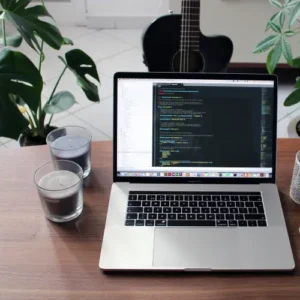In an era dominated by digital interactions and online presence, the security of a website is paramount. Whether you are managing a personal blog or a thriving e-commerce platform, ensuring the safety of your Core PHP website is a crucial aspect of web development. In this comprehensive guide, we will explore the key strategies and best practices to establish a secure Core PHP website, creating a virtual fortress against potential threats.
Understanding the Security Landscape
Before delving into specific security measures, it’s essential to comprehend the threat landscape that websites face today. Cyberattacks, data breaches, and malicious activities are unfortunately common occurrences on the internet. A secure Core PHP website must be equipped to defend against various types of threats, including SQL injection, cross-site scripting (XSS), cross-site request forgery (CSRF), and unauthorized access.

1. Input Validation and Sanitization
A robust security strategy begins with thorough input validation. Ensure that all user inputs are validated on the server side to prevent malicious data from compromising your Core PHP website. Employing input sanitization techniques is crucial for filtering out potentially harmful characters or scripts, and thwarting attempts at SQL injection and other injection attacks.
// Example of input validation in PHP
$input_username = $_POST['username'];
$clean_username = filter_var($input_username, FILTER_SANITIZE_STRING);2. Parameterized Queries for SQL Injection Prevention
SQL injection is a prevalent attack vector, and Core PHP developers must be vigilant in protecting against it. Utilizing parameterized queries when interacting with databases can significantly mitigate the risk of SQL injection. This ensures that user inputs are treated as data and not executable SQL code.
// Example of parameterized query in PHP
$stmt = $pdo->prepare("SELECT * FROM users WHERE username = ?");
$stmt->execute([$clean_username]);3. Secure Coding Practices
Adhering to secure coding practices is foundational for creating a resilient Core PHP website. Avoid using deprecated functions, and regularly update your PHP version to benefit from the latest security patches. Keep your codebase clean and well-organized, minimizing vulnerabilities that may arise from sloppy coding habits.

4. Regular Software Updates
Maintaining an up-to-date software environment is imperative for security. Regularly update your PHP version, web server software (e.g., Apache), and any third-party libraries or dependencies. This ensures that your Core PHP website remains fortified against known vulnerabilities that might be exploited by attackers.
5. HTTPS Encryption
Implementing HTTPS encryption is non-negotiable for a secure website. SSL/TLS certificates encrypt data transmitted between the user’s browser and your server, safeguarding sensitive information such as login credentials and personal details. Google also considers HTTPS as a ranking factor, making it essential for both security and SEO purposes.
6. Session Management and Authentication
Developing a robust authentication system and effective session management is crucial for controlling user access. Implement secure password storage using hashing algorithms like bcrypt, and enforce strong password policies. Additionally, employ secure session handling to prevent session hijacking or fixation.
7. Cross-Site Scripting (XSS) Prevention
Cross-Site Scripting attacks can manipulate user interactions on your website, potentially compromising user data or spreading malware. Sanitize and validate user inputs, and implement output encoding to prevent the execution of malicious scripts injected by attackers.
// Example of output encoding in PHP
echo htmlspecialchars($user_input, ENT_QUOTES, 'UTF-8');8. Cross-Site Request Forgery (CSRF) Protection
Protect your Core PHP website from CSRF attacks by implementing anti-CSRF tokens. These tokens ensure that form submissions are legitimate and not forged by malicious actors attempting to exploit the trust of authenticated users.
// Example of anti-CSRF token generation in PHP
$csrf_token = bin2hex(random_bytes(32));
$_SESSION['csrf_token'] = $csrf_token;9. File Upload Security
If your Core PHP website involves file uploads, exercise caution to prevent potential security risks. Validate file types, restrict file sizes, and store uploads in a secure directory with limited permissions. Implement measures to prevent malicious files from being executed on the server.
10. Monitoring and Logging
Establish a robust monitoring system to keep a vigilant eye on your website’s activities. Regularly review server logs, set up intrusion detection systems, and implement alerts for suspicious activities. Timely detection of anomalies can help in mitigating potential security breaches.
Conclusion
Building a secure Core PHP website demands a proactive approach that addresses potential vulnerabilities at every level. By incorporating input validation, secure coding practices, encryption, and other measures discussed in this guide, you can create a website that not only delivers an exceptional user experience but also stands resilient against the ever-evolving landscape of cyber threats. Stay informed, stay vigilant, and prioritize security in every line of code to ensure the long-term success and safety of your Core PHP website.










